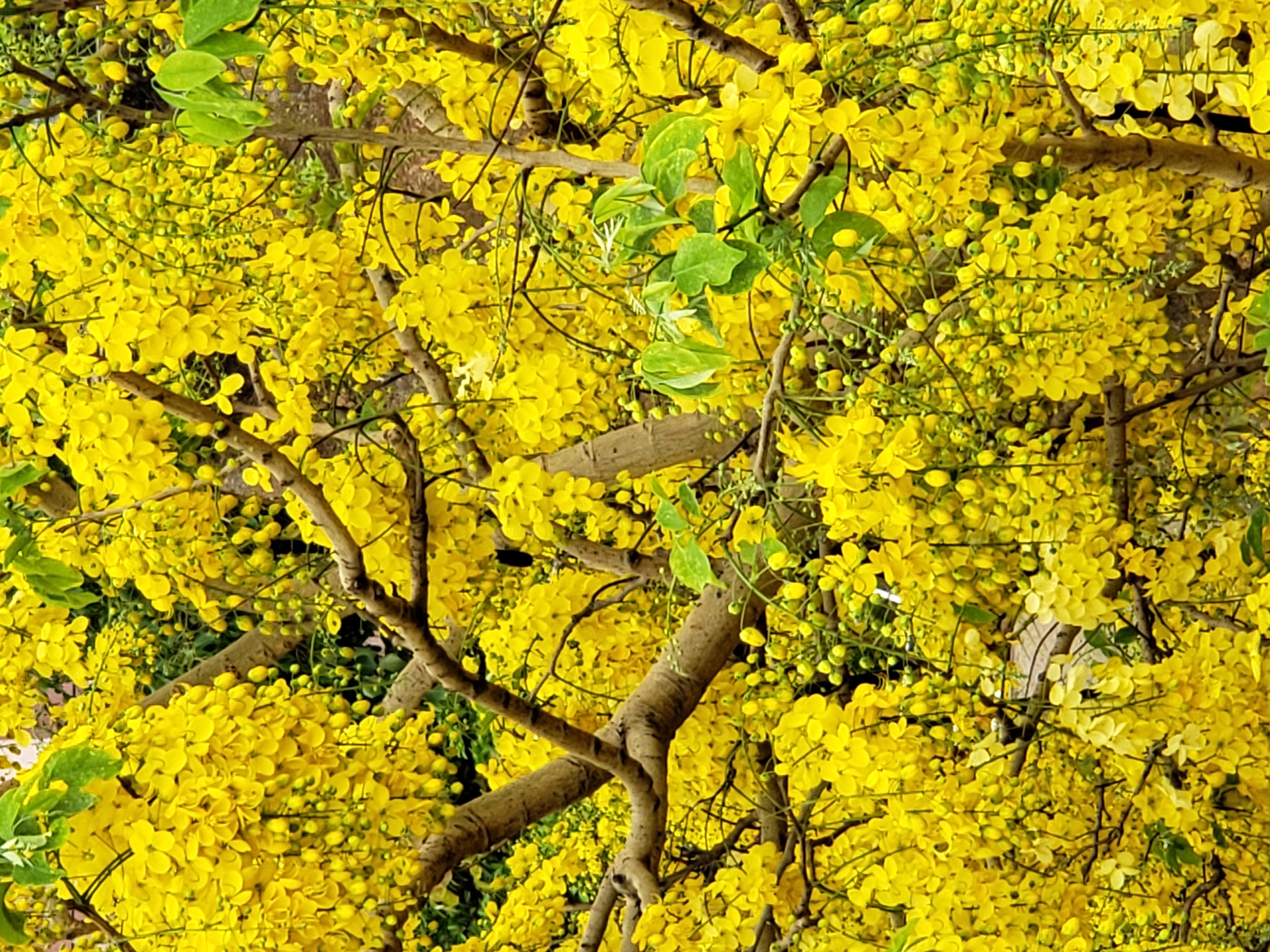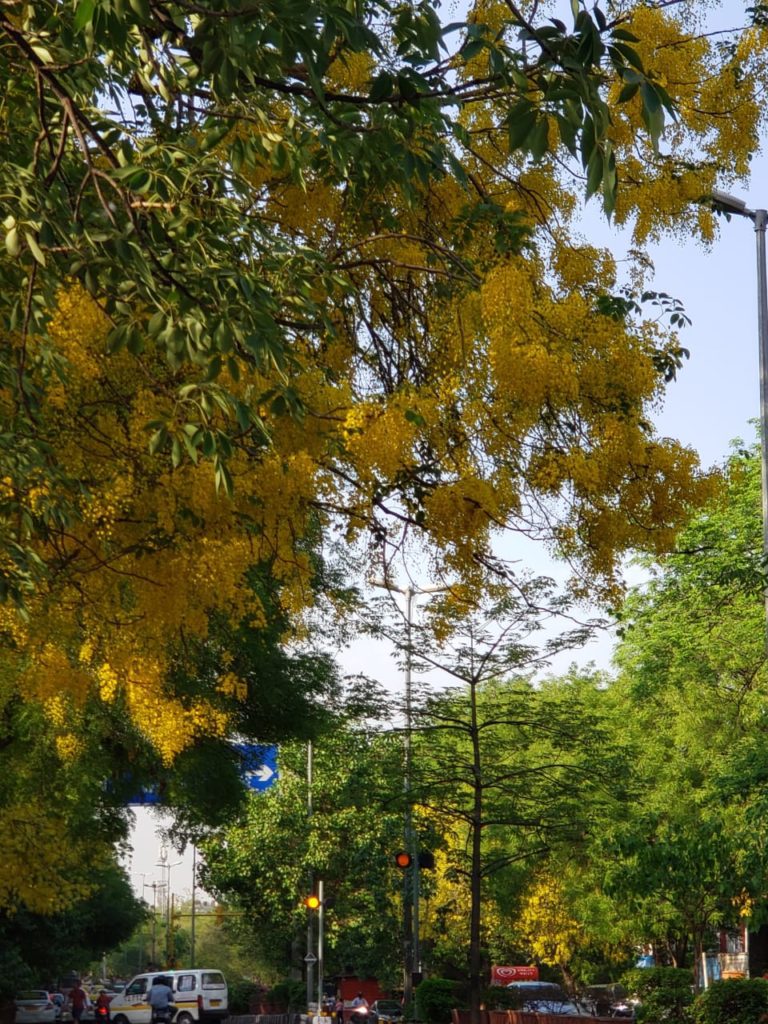
I think I was an amaltas tree in my last life. Why else does a frisson run up my spine each time I look at that fount of yellow sprinklers?
If you want to see Nature manifest its generosity, amaltas (Indian laburnum or Cassia fistula) can be a good study. By early April leaves shed and the brown slender branches of this tree of medium height look quite bare. In May, yellow- green soft buds appear in such profusion, the other trees in the vicinity look redundant. And then when May peaks, dazzling yellow pendulous chandeliers hang graciously, with such compelling beauty, you are awestruck.
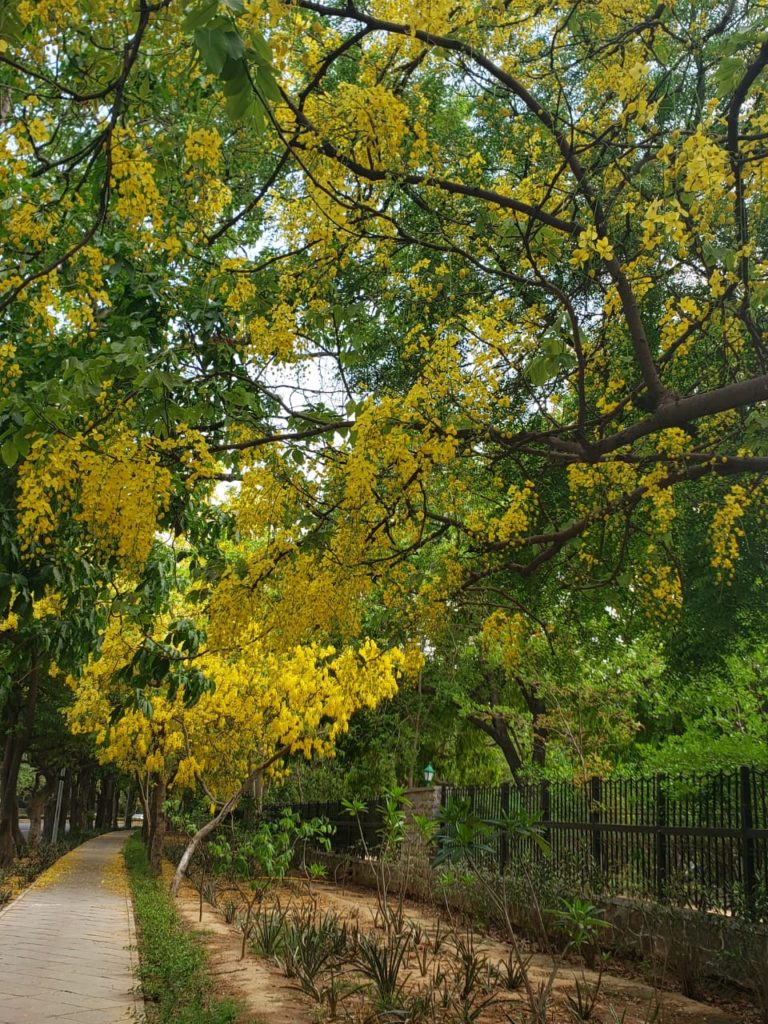
Delhi in May must be fatiguing even for the sun. To burn with such a vengeful intensity all day can’t be intentional. Yet, I wait for the summers and feel gratitude for the innumerable amaltas trees planted by some thoughtful town planners. Sometimes unexpected showers slink in and bring respite to the Delhi denizens and a fresh flush of flowers takes the trees in a loving embrace. By now amaltas starts to paint the city yellow.
Each flower is a masterpiece, each tree an art gallery. The magnificent spray of flowers is about 60 cm long and the yellow varies. It is almost like God was mixing the yellow paints to get the best hue and finally decided to use all those colours on his palette- gold, amber, citrine…
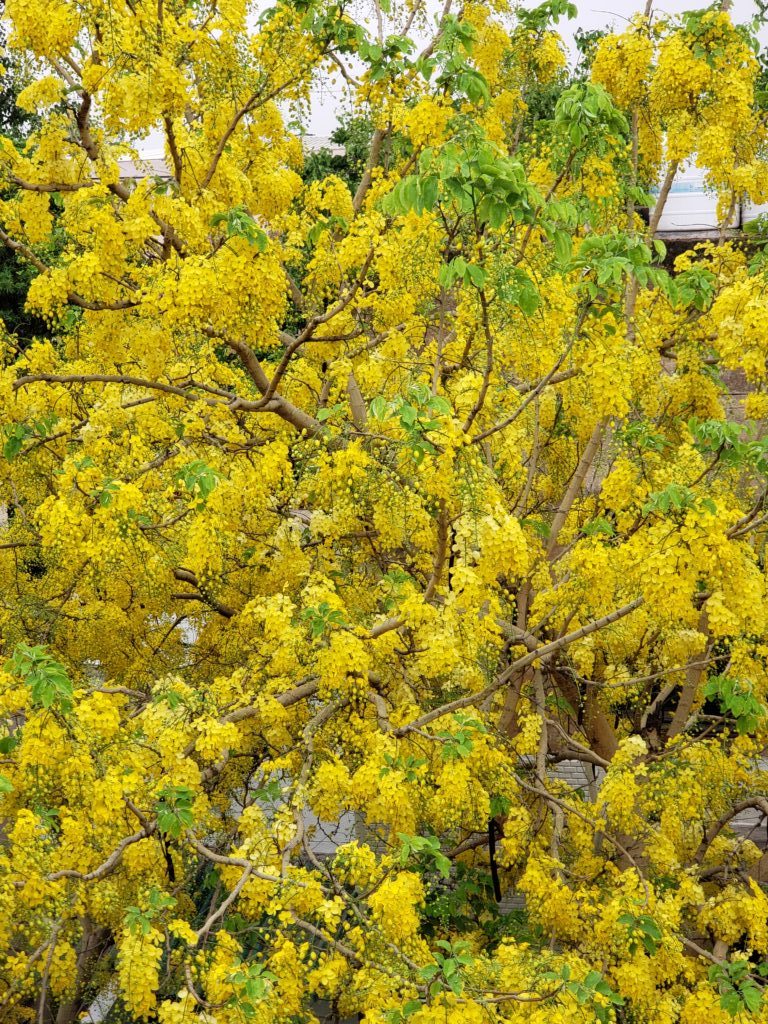
Five overlapping, spirited yellow petals droop and make the flower exceedingly enticing. The ten unequal stamens are grouped in 3-4-3; three longest stamens bent into a slender S, three shortest ones upright and the four longer ones looking away, making the fragrant flower look like a graceful dancer in a captivating mudra.
The fruits are long cylindrical pipes (fistula in Latin), with seeds arranged neatly like little compartments of a goods train. The soft strong smelling sweetish pulp is a favourite with jackals and bears.
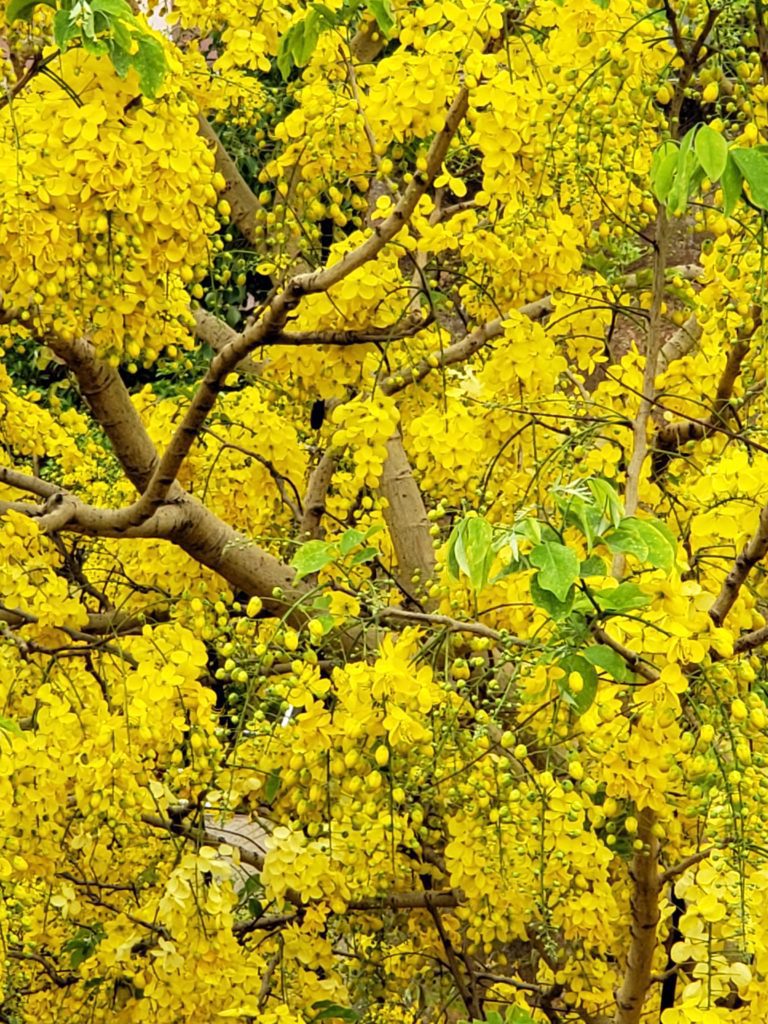
Pradip Kishen in his seminal book ‘Trees of Delhi’ tells us in great detail about the reproductive strategy of amaltas. In a famous experiment conducted in the Forest Research Institute in Dehradun, Robert Troup, a British Forestry expert, found that bears, jackals, pigs and monkeys, even civets and porcupines are all unwitting agents in the propagation of this riveting ornamental tree.
The amaltas is not just captivating in its beauty but also is a panacea for all ills. It is called Aragvadha in Sanskrit- the one that is the scourge of diseases. Shakespeare did say, what’s in a name, yet this tree commands many epithets because of its innate qualities. Amaltas is, therefore, Rajavriksh, because of its majestic carriage; Vyadhivata, the destroyer of diseases; Suvarnbhushana, for its gold, bejewelled persona; Kritmala, the wearer of garland of flowers; Deerghaphala, because it bears the long pods or Shampaka, that which produces useful fruits.
For me, it brings back memories of Holi. Someone up there is spraying yellow gulal on the face of earth!
Visit our lodges in Kanha, Bandhavgarh, Pench, Satpura and Panna to watch these fascinating species frolic in the wild. Get in touch with our trip curators at Pugdundee Safaris to book your next wildlife holiday.
Our trip curators at Pugdundee Safaris are more than happy to assist you.Phone: +91-011-40132680 Email: [email protected]

